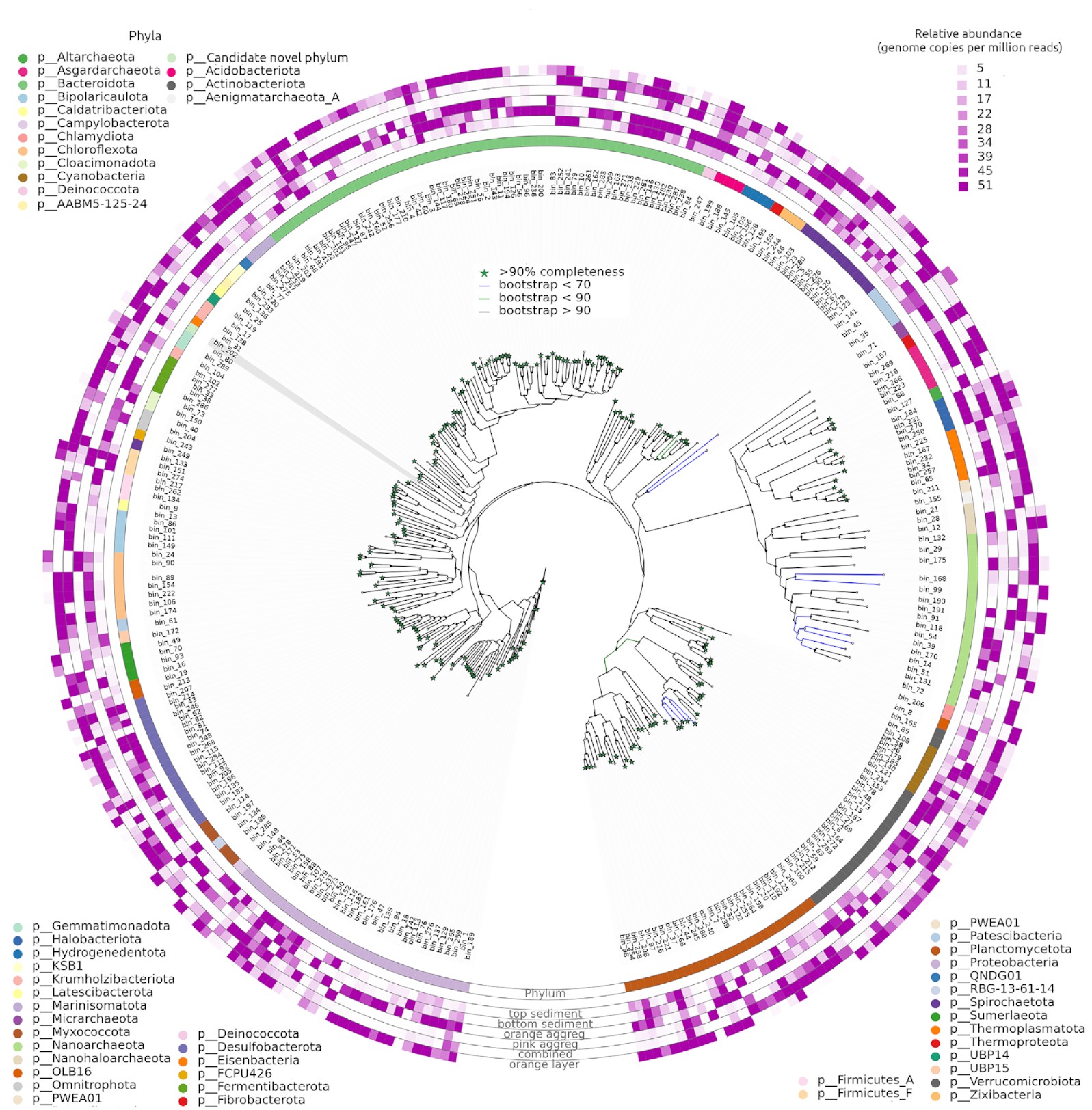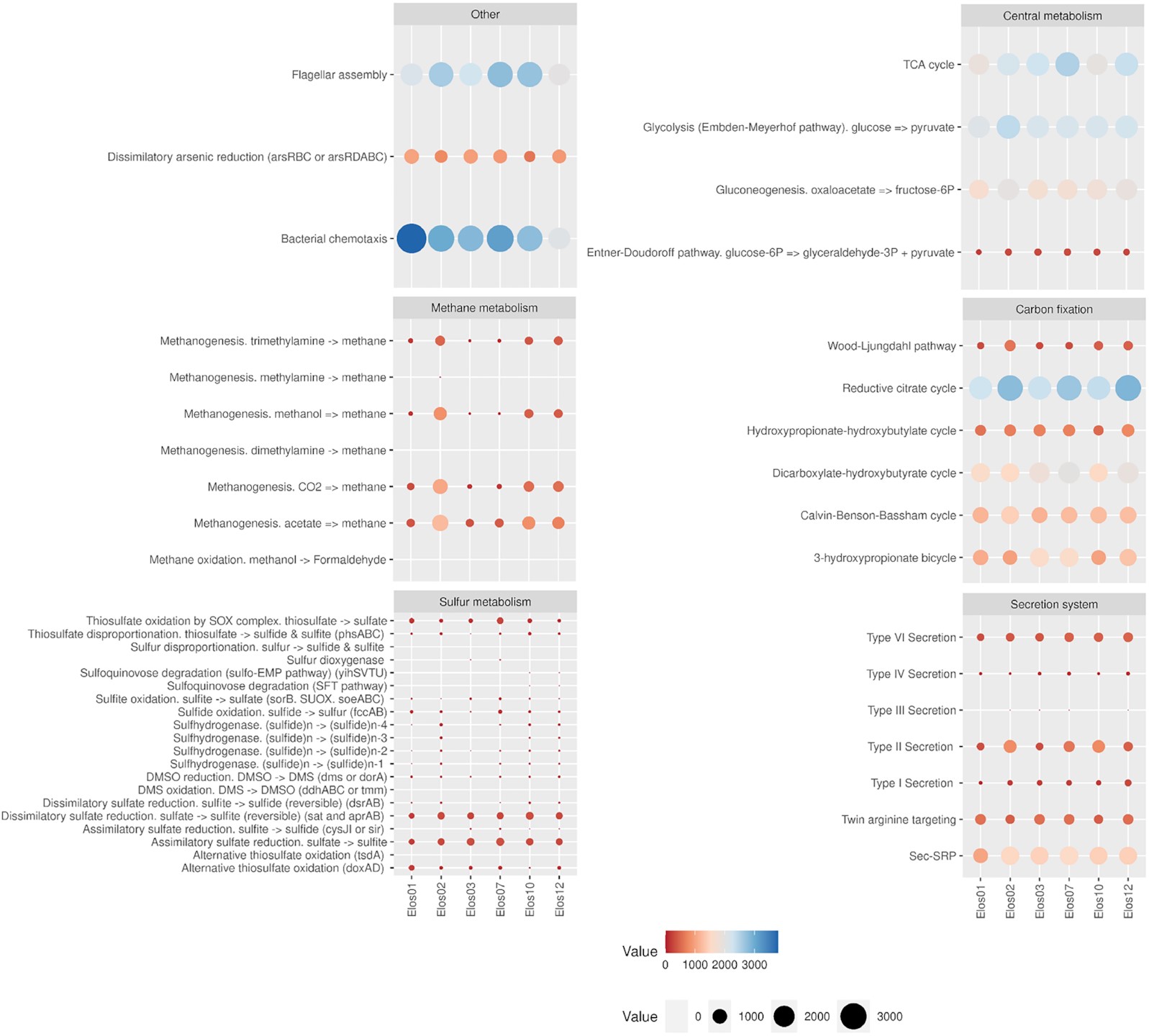Deciphering the functional potential of a hypersaline swamp microbial mat community
The present study combines 16S rRNA amplicon sequencing and shotgun metagenomics on a hypersaline marsh in Tristomo bay (Karpathos, Greece). Samples were collected in July 2018 and November 2019 from microbial mats, deeper sediment, aggregates observed in the water overlying the sediment, as well as sediment samples with no apparent layering. Metagenomic samples’ coassembly and binning revealed 250 bacterial and 39 archaeal metagenome-assembled genomes, with completeness estimates higher than 70% and contamination less than 5%. All MAGs had KEGG Orthology terms related to osmoadaptation, with the ‘salt in’ strategy ones being prominent. Halobacteria and Bacteroidetes were the most abundant taxa in the mats. Photosynthesis was most likely performed by purple sulphur and nonsulphur bacteria. All samples had the capacity for sulphate reduction, dissimilatory arsenic reduction, and conversion of pyruvate to oxaloacetate.


